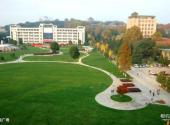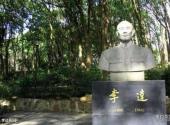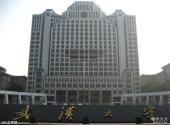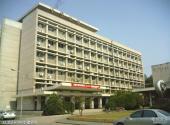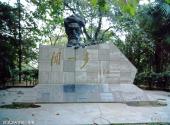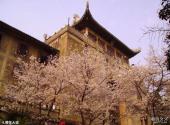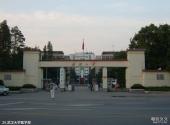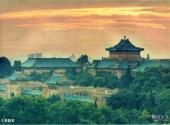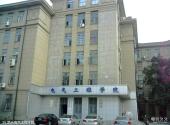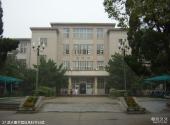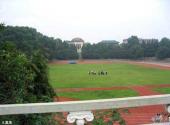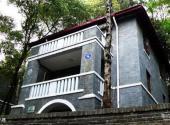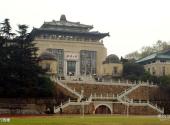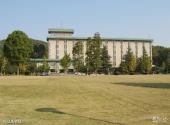
School Profile:
Wuhan University traces its origins to the Self-Strengthening School founded by Zhang Zhidong, the governor of Huguang in 1893 at the end of the Qing Dynasty. In 1913, the National Government established the National Wuchang Higher Normal School and named it National Wuhan University in 1928. It was one of the first batch of national comprehensive schools in modern China. One of the universities, the first institution of higher learning in Hubei. At present, Wuhan University is a key comprehensive university directly under the Ministry of Education of China, a key construction university of the "985 Project" and the "211 Project". The university campus is close to the East Lake, surrounded by Luojia, and is full of green gardens, with pink and white cherry blossoms, and the fragrance of birds and flowers. The palace-style early buildings that combine Chinese and Western styles are simple, elegant, and majestic. They can be called "a masterpiece and model of modern Chinese university campus architecture." The picturesque scenery makes it known as "one of the most beautiful universities in the world."Location:
Early buildings (groups) such as Songqing Gymnasium, Yingyuan Old House, Old Library, Banshanlu, and Shiba Building on the campus of Wuhan University have been listed as "National Key Cultural Relics Protection Units" by the State Council; in recent years, the newly built Law Building, Economics and Management Building, etc. Landmark buildings in the liberal arts district such as the Building and the Foreign Languages Building have risen from the ground, with majestic momentum. The new and old buildings complement each other and complement each other, making the Luojia campus more colorful; Wuhan University student accommodation areas include Guiyuan, Maple Garden, Cherry Garden and Plum Garden. Named after its scenery, spring, summer, autumn and winter are all full of poetry and painting, and accommodation areas such as Lakeside and Star Lake have their own characteristics; Luojia Mountain, where the Wuhan University campus is located, has a rich and colorful plant system and a large number of rare plants, with the highest number of trees in the country. The reputation of the garden is the Botanical Garden Branch of the Chinese Botanical Society; the Wuhan University campus also has the "June 1st Memorial Pavilion", "Mr. Wen Yiduo Memorial Statue", "Kunpeng Spreading Wings", "Li Da Statue", "Einstein "Statue of Alain Perefit", "Statue of Li Siguang", "Statue of Wang Shijie", "Bronze Statue of Confucius" and other cultural landscapes.After the merger of Wuhan University in 2000, the campus increased to four There are three campuses, namely: Department of Arts and Sciences (formerly Wuhan University Campus), Department of Engineering (formerly Wuhan University of Hydraulic and Electric Power), Department of Informatics (formerly Wuhan University of Surveying and Mapping Technology), and Department of Medicine (formerly Hubei Medical University). The disciplines of Wuhan University are complete and comprehensive. It has strong personality and distinctive characteristics, covering 11 disciplines including philosophy, economics, law, education, literature, history, science, engineering, agriculture, medicine, and management. The school has humanities, social sciences, science, engineering, and information science. There are 36 colleges (departments) in six universities of China and Medicine. 5 first-level disciplines are recognized as national key disciplines, covering a total of 29 second-level disciplines, and 17 second-level disciplines are recognized as national key disciplines. Key disciplines. 6 disciplines are national key (cultivation) disciplines. 36 first-level disciplines have the right to grant doctoral degrees, 250 second-level disciplines have the right to grant doctoral degrees, and 32 of the 342 disciplines have the right to grant master's degrees. There are three postdoctoral mobile stations.
School Features:
Inspection, cherry blossoms, colleges and universitiesTravel Notes of Travellers:
- Travel tips: Best travel tips for March
- Travel tips: A review of the most beautiful flower-viewing spots in spring
- Travel Guide: Wuhan Free Travel Guide for Two Days 2018
Tour route:
Enter from the main entrance of Wuhan University, which is the "National Wuhan University" archway. After entering, there is a school bus to Lakeside. It costs one yuan to get on the bus and get off at Yingyuan. The cherry blossoms of Wuhan University start from Kunpeng Square next to the second teaching building and continue to the vicinity of the administrative building. Among them, the Yingding Laozhaishe is the best. Climbing up the 88 steps, you can enjoy the panoramic view of the flourishing cherry blossoms from a high place. Of course, the cherry blossoms at Wuhan University are still scattered near the administrative building and in small parts of other campuses.
Best time to visit:
The cherry blossoms at Wuhan University bloom from late March to early April, and the ticket is 10 yuan. There are more tourists on weekends, so those who can afford it can consider going there on weekdays.
School Location:
China>Hubei Province>Wuhan City
How to get there:
Wuhan University is located in Luojia Mountain, Wuchang District, Wuhan City, Postal Code: 430072.
The bus number 519 goes to the main gate of Wuhan University as the final stop. The station is named Luojia Mountain. After entering the campus, there are volunteers from the society serving as free tour guides at Jianhu Lake.
School Map:
Click to expand school map
School Website:
Woo woo woo. Maintenance. Quota. Talent

